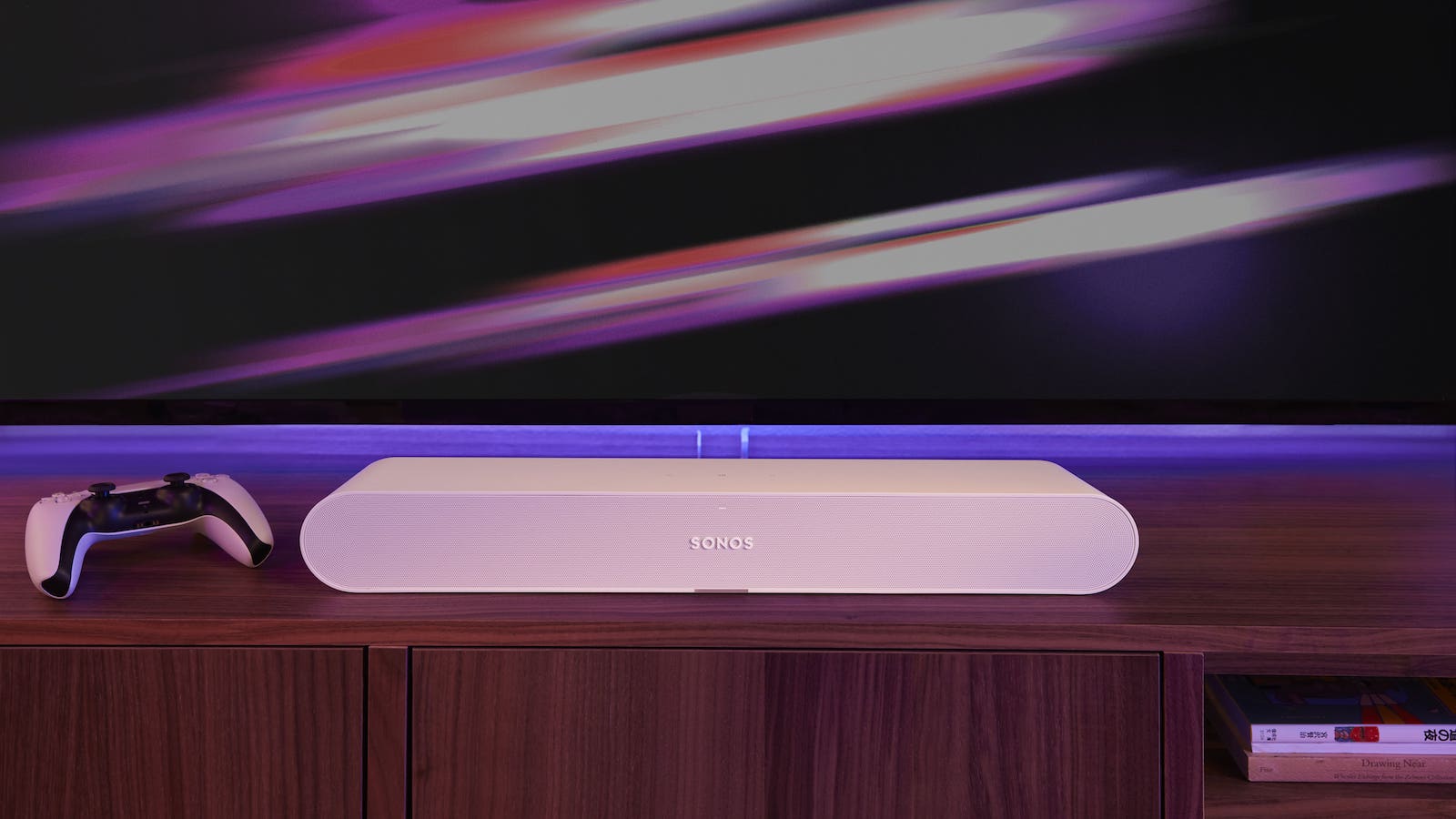Sonos Ray is the smallest, cheapest Sonos soundbar yet, launching on 7th June
It's significantly more affordable than the Beam, but there's no HDMI or Atmos

After a slew of leaks, Sonos has finally officially unveiled its new Ray soundbar. Launching on 7th June for £279 / $279 / AU$399, the Ray is comfortably the most affordable soundbar Sonos has ever produced and significantly undercuts the Sonos Beam Gen 2 (£449 / $449 / AU$699).
Inevitably, the Ray is a simpler proposition than the Beam and high-end Arc, most obviously in that it does without HDMI and can't handle Dolby Atmos. Instead, it connects to your TV via optical (a cable is included in the box) which, Sonos points out, is even more common than ARC-compatible HDMI sockets, and outputs sound via two mid-woofers, two angled tweeters and a pair of bass reflex ports.
Unlike the Beam and Arc, the Ray has a flat grille and outputs all sound forwards, and that makes it the first Sonos soundbar that can perform as intended from a shelf under a TV, though wall-mounting is also an option.
While all of its drivers fire forwards, the Ray still utilises boundary reflections in order to fill a room with sound, and the effectiveness of this can be enhanced thanks to support for Sonos' Trueplay feature, which involves measuring the output of the soundbar via an iPhone or iPad so that it can be tailored to your specific space.
The Ray, like its siblings, can also be enhanced through the addition of Sonos speakers (such as the One or Symfonisk) as surrounds and/or the Sub. Interestingly, while the leaked information published in the run up to launch has proven to be highly accurate, one detail is notably incorrect: the Ray cannot itself be used as a surround speaker.
While we'll have to wait until we get the Ray into our test labs before delivering a verdict, we have run the rule over its specs for this in-depth Sonos Ray breakdown and Sonos Ray vs Sonos Beam Gen 2 comparison.
MORE:
Get the What Hi-Fi? Newsletter
The latest hi-fi, home cinema and tech news, reviews, buying advice and deals, direct to your inbox.
Check out the competition with our best budget soundbars guide
Which Sonos soundbar should you buy?
Want a Sonos speaker that can go anywhere? Check out our Sonos Roam review
Tom Parsons has been writing about TV, AV and hi-fi products (not to mention plenty of other 'gadgets' and even cars) for over 15 years. He began his career as What Hi-Fi?'s Staff Writer and is now the TV and AV Editor. In between, he worked as Reviews Editor and then Deputy Editor at Stuff, and over the years has had his work featured in publications such as T3, The Telegraph and Louder. He's also appeared on BBC News, BBC World Service, BBC Radio 4 and Sky Swipe. In his spare time Tom is a runner and gamer.
-
manicm This will prove to be Sonos' first big misstep, let me explain why. Most TVs have their optical port at the back. This goes totally against the user who wants a basic friendly system to connect and forget. To keep the price at this level I would have ditched the optical for a single HDMI arc port, sans Atmos, and ditched the ethernet port, seriously in this market who will use the latter?Reply
Thanks but no thanks Sonos.

